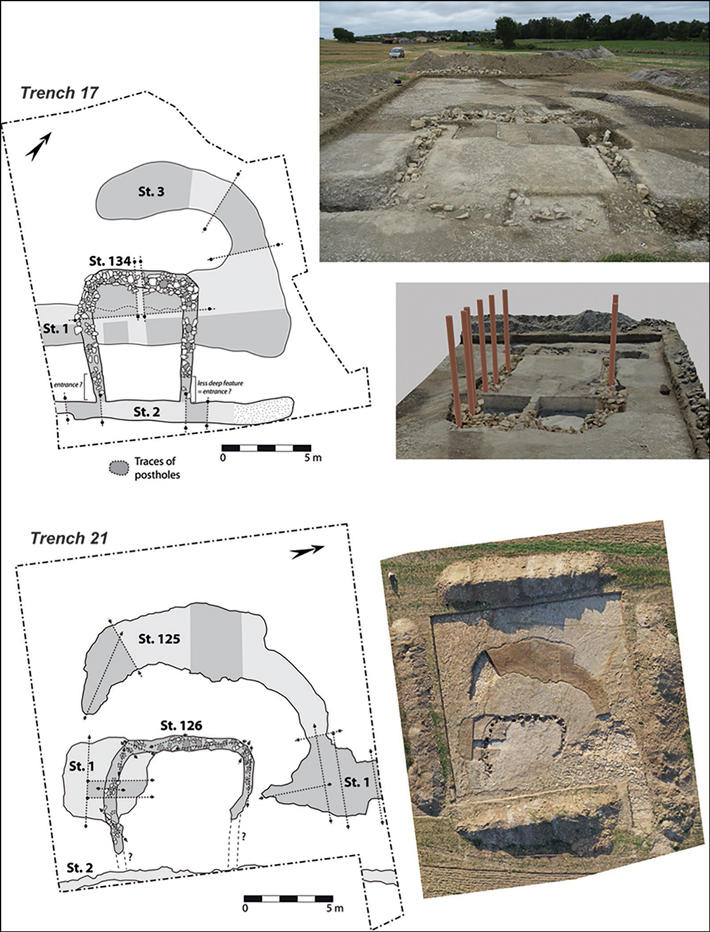 CAMBRIDGE, ENGLAND—According to a statement released by the University of Cambridge, a Neolithic site in west-central France is thought to be the home of some of the first people to construct megalithic barrows and dolmens in Europe. Vincent Ard of the French National Center for Scientific Research and his colleagues determined that the Le Peu enclosure, which was discovered during an aerial survey in 2011, consisted of several timber buildings clustered on the top of a small hill surrounded by a palisade. Two monumental structures guarded the entrance to the palisade. Soil testing of the area showed that the settlement was also bordered by a protective marsh. The hilltop buildings have been dated to the fifth millennium B.C., making them the oldest wooden structures in the region and contemporary with the five long mounds at the nearby Tusson megalithic cemetery. This cemetery would have been visible from the Le Peu enclosure, Ard explained. The buildings at Le Peu appear to have burned down in 4400 B.C., he concluded. Read the original scholarly article on the research at Antiquity. To read more about Neolithic sites in France, go to "Megalithic Mystery."
CAMBRIDGE, ENGLAND—According to a statement released by the University of Cambridge, a Neolithic site in west-central France is thought to be the home of some of the first people to construct megalithic barrows and dolmens in Europe. Vincent Ard of the French National Center for Scientific Research and his colleagues determined that the Le Peu enclosure, which was discovered during an aerial survey in 2011, consisted of several timber buildings clustered on the top of a small hill surrounded by a palisade. Two monumental structures guarded the entrance to the palisade. Soil testing of the area showed that the settlement was also bordered by a protective marsh. The hilltop buildings have been dated to the fifth millennium B.C., making them the oldest wooden structures in the region and contemporary with the five long mounds at the nearby Tusson megalithic cemetery. This cemetery would have been visible from the Le Peu enclosure, Ard explained. The buildings at Le Peu appear to have burned down in 4400 B.C., he concluded. Read the original scholarly article on the research at Antiquity. To read more about Neolithic sites in France, go to "Megalithic Mystery."
Prehistoric Monument Builders’ Homes Found in France
